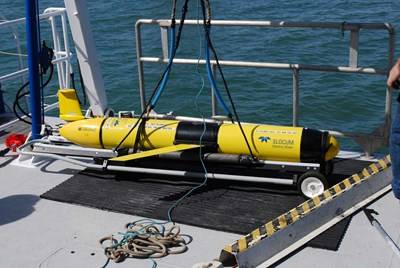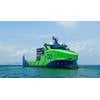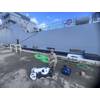The latest in satellite, airborne and in-water surveillance and communications equipment were recently put to work off the coast of England for an exercise aiming to determine how remote sensing technologies can help identify and monitor oil spills at sea more effectively.
The exercise took place on June 13, 2017 in open sea off the southern coast of England, showcased through Oil Spill Response Ltd.’s (OSRL) Southampton-based Visualization Center, which provided a ‘Common Operating Picture’, integrating data from each of the technology partner’s equipment as well as oil spill modeling platforms and satellite feeds.
The main surveillance tools and providers involved in the exercise included:
- Radar and optical satellite imagery (MDA, Earth-I, Airbus, Telespazio)
- Infra-red and Ultraviolet sensors on the OSRL UKCS aircraft (2Excel Aviation)
- Airborne hyperspectral sensors (2Excel Aviation)
- Unmanned Aerial Vehicles (UAVs) (Sky Futures and Bristow Group)
- Autonomous Underwater Vehicles (AUVs) (Blue Ocean Monitoring and Planet Ocean)
- A surveillance kite with COFDM link (Domo Tactical Communications (DTC))
- IP Mesh Network on vessel and crew (Briggs Marine and DTC)
- SCAT (Shoreline Clean-up Assessment Technique) based surveys testing a new SCAT e-tool
A minimal amount of oil was released under carefully controlled conditions and with approval from the Marine Management Organization (MMO) following a rigorous planning and stakeholder consultation process. On hand was the full complement of oil spill response equipment and personnel, including a purpose-equipped vessel, containment and recovery equipment and U.K. approved dispersant.
“Achieving maximum effectiveness in response to an oil spill incident is based on prior preparedness and understanding the capabilities of the equipment contained within our ‘response toolkit’. As a result, we are constantly reviewing the potential impact the latest response technology can have on further negating the impact of a spill incident,” said Robert Limb, Chief Executive for OSRL. “Through the course of this exercise we were able to monitor, evaluate and mitigate the oil – giving us, our members and the general public total confidence in our systems and approach.”
The remote sensing technology used was able to identify and monitor the controlled spill, and OSRL said it was satisfied by the performance of the various new technologies involved. In addition, OSRL said the response equipment and personnel operated in an efficient and effective manner providing validation of its approach.
Limb said, “We work closely with technical partners to monitor developments in cutting-edge remote sensing technology to identify development opportunities for OSRL and its members. There is no doubt that as part of any oil spill response, both now and in the future, the technology we used on this exercise will continue to play an ever more significant role. Events such as this are vital to staying at the forefront of our industry and to delivering on our commitment to reducing risk and protecting the environment.”














 December 2025
December 2025



